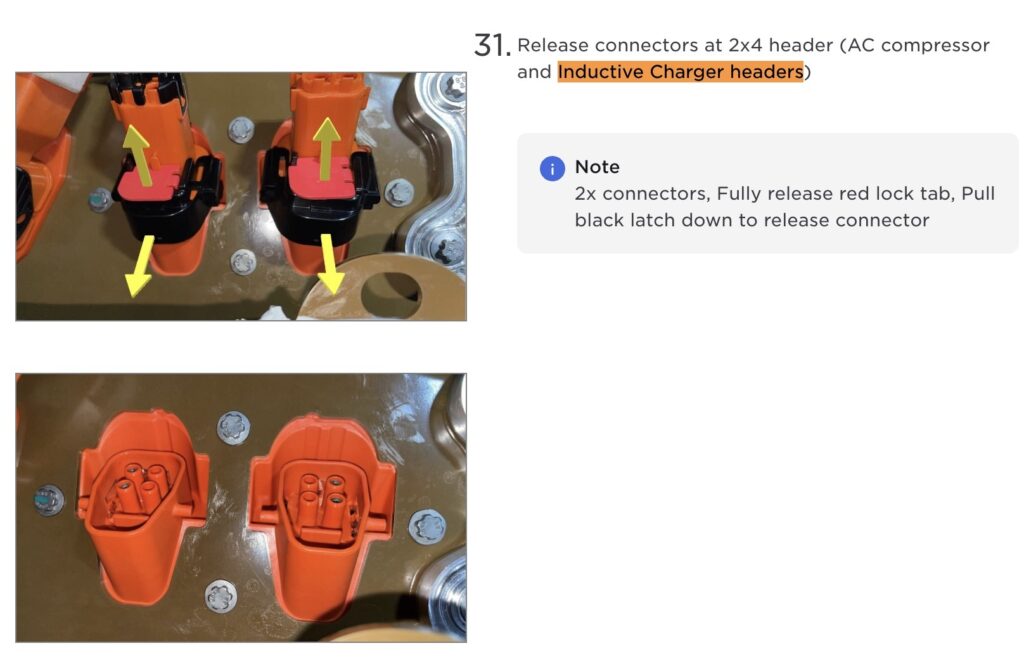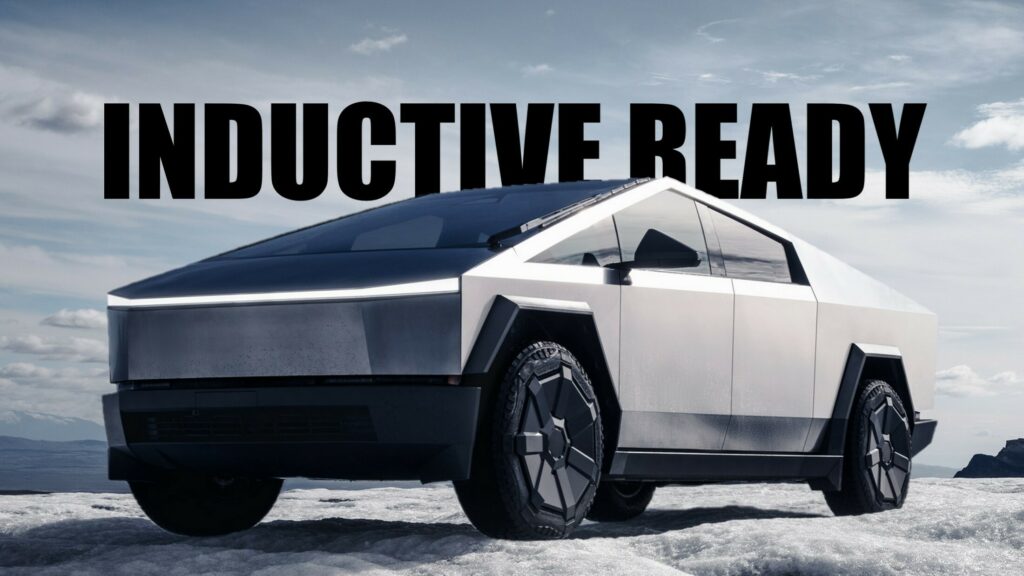- The service manual hints at future wireless charging capabilities, with blank connectors designated for an “inductive charger.”
- Wireless charging could improve convenience, eliminating the need to physically plug in the vehicle.
- While Tesla isn’t the only automaker exploring wireless charging, the tech could revolutionize EVs by reducing range anxiety and allowing for smaller batteries.
The Tesla Cybertruck is already a showcase of futuristic technology, but it may soon boast a new and rather nifty feature for owners to boast about: wireless charging. According to a section in the electric truck’s service manual, this capability may soon be available.
Also known as inductive charging, a technology familiar from smartphones where the battery fills when placed on a special mat, may soon be applied to the Tesla Cybertruck. Franz von Holzhausen, Tesla’s head of design, previously mentioned to Jay Leno that owners would be able to drive into their garage, pass over a pad, and charge without the hassle of plugging in.
And that was more than just wishful thinking from the designer, as the vehicle has been built with blank high voltage connectors, according to a passage from the Cybertruck service manual dug up by Cybertruckownersclub forum users. The plugs will be used for, among other reasons, an “inductive charger.”
Read: VW’s Innovation Hub Is Working On Wireless EV Chargers And Other Game Changing Tech
That same section of the manual was later pointed to by Wes Morrill, the Cybertruck’s lead engineer. After the unoccupied plugs were found by Sandy Munro in a recent video, Morrill linked to an image of the connectors that identified them as being for the AC compressor and Inductive Charger. He then wrote, “You don’t have to figure it all out on your own,” after pointing out that the document was publicly available.

Tesla is far from the only automaker exploring inductive charging, a convenience that could enhance the appeal of electric vehicle ownership for those with home garages. However, the potential applications of this technology go beyond just eliminating the need for manual plugging.
A number of companies and governments around the world are working to embed roads with copper wires to allow vehicles to charge as they move. The technology is already being experimented with in Detroit, and if it is widely adopted, could eliminate range anxiety, and allow automakers to sell vehicles with smaller, lighter, and less environmentally taxing battery packs.
While this isn’t exactly hard evidence that Tesla is on the verge of unveiling an inductive charger, it does at least suggest that the company is taking the technology seriously. And although roads that charge your vehicle as you drive down them may be in their early development, making the process of charging your EV once you get home more convenient certainly seems like a positive for the industry.
Don’t forget you can always check our publicly available service documentation! You don’t have to figure it all out on your own. https://t.co/xQymkBSVfW
— Wes (@wmorrill3) March 22, 2024




